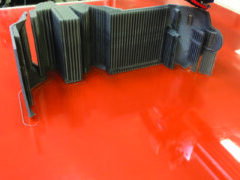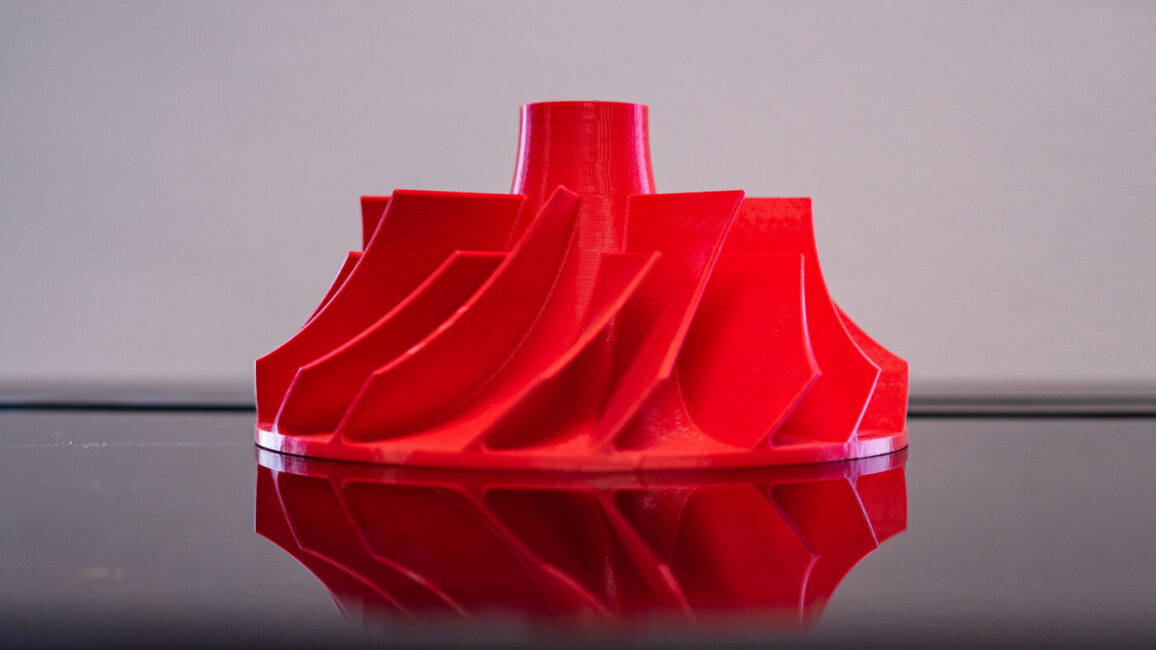How thin can a 3D printer print? This is one of the curiosities on people’s mind especially because of the amazing breakthrough technology advancements have brought to the field of 3D printing.
This article seeks to unfold the intricacies of achieving fine prints, nozzle sizes comprehension, wall thickness, and what to employ to make all the difference you desire in your print.
Well, to fully explore the limits of 3D printing technology and indeed answer the question: how thin can a 3D printer print?
We need to consider some type of 3D printing techniques, such as FDM. Let’s get to it.
In FDM printing, a model construction is done through the print of layers of filament (plastic). which is heated till it melts and is introduced and guided through the printer’s nozzle. Usually, the size of the printer’s nozzle reflects on the width of the layer that is printed onto the print bed.
Several sizes of these nozzles are available, to enable printing various wall thicknesses. When printing thin-walled models, which is our focus in this article. It is important to know how this really works.
This matters because, if the settings are wrong, it could happen that a wall will be poorly constructed or not printed at all. This often happens when models are scaled down.
Factors to consider to achieve a thin 3D Printer Print
1. Different Nozzle Sizes
There are different nozzle sizes on a 3D printer used for diverse purposes. Say, you want to quickly print a model without much hassle about the details. Then, a big nozzle size of about 1.0mm would be ideal.
This nozzle size prints a wide and high layer, resulting in less required layers and overall makes for a quicker result. However, if you want to print a more detailed or thin-walled model, a smaller nozzle, like 0.2 or 0.4mm is recommended.
2. Very thin walls

While it is necessary to achieve thin wall supported nozzles via settings, too thin walls might be a limitation. When scaling down a model, the walls may become too thin to be printed.
Most 3D printers have a set nozzle size with a diameter of 0.4mm or 0.5mm, and this most likely works for many models, but difficulties could arise when layers smaller than this nozzle size need to be printed.
For instance, a 0.2mm thick wall has to be printed with a 0.4mm nozzle, this wall will not reflect in the Simplify3D preview and not be printed. Sometimes, models should be scaled to a different size.
This can be achieved in the CAD program, but also by using slicing software like Simplify3D (which offers users the ability to convert a 3D model into a printable file.
To acquire the best result, it’s advisable to always scale a product in the CAD program. There are two possible ways to achieve correctly printed walls.
- Change the Design: Firstly, adjust the model in the original CAD program and ensure the walls are at least as big as the nozzle size or a bit bigger than the nozzle, 20% at the most. When all walls have been adjusted, the model should be imported into the slicer software again.
- Change the Nozzle: Also, you can install a smaller nozzle. The dddrop 3D printers is built in such a way that’s easy to change the nozzle. You can choose from nozzles in the sizes 0.2, 0.4, 0.6, 0.8 or 1.0mm. This enables you to print at high speed as well as detailed thin-walled products.
Also Read: Can 3D Printers Print Silicone
3. Material Considerations for Thin Printing
How thin can a 3D printer print? can be significantly impacted by the choice of materials? Different materials have distinct melting points and flow characteristics. This makes it a crucial need to choose a material that flows smoothly at the set printing temperature, adheres well to the print bed, and readily solidifies to maintain the thin structure.
Trying out diverse materials and observing their behavior helps in grasping which supports thin printing, at the desired precision and quality in your projects.
4. Software Settings for Optimized Thin Printing
If you have adhered to the listed points above and you still have yet to achieve the level of thinness you desire from a 3D printer it could be as a result of your printer settings.
Key settings should be checked, such as: layer height, wall thickness, and printing speed. A lower value for layer height brings about finer layers, and the wall thickness setting ensures the structural beauty of the model.
While, a reasonable printing speed, preferably unhurried, allows for more accurate material deposition, which is crucial for achieving thin prints.
Mastering how these settings contribute in the slicing software is a significant step towards successful thin printing, leading to higher precision and quality in your projects.
Conclusion
As outlined, while exploring the aspects of 3d printing that answers How thin can a 3D Printer Print, we find that it takes beyond the nozzle precision but the right balance of hardware, software, and overall settings to achieve the precise measure of thinness
FAQS
What is the thinnest layer a 3D printer can print?
The thinnest layer height a 3D printer can print is typically pegged around 0.025 mm or 25 microns for SLA 3D printers, and around 0.1 mm or 100 microns for FDM 3D printers.
How thin is too thin for a 3D printer?
The minimum thickness a 3D printer can achieve is anchored on its hardware, particularly the nozzle size. For a standard 0.4 mm nozzle, the thinnest line it can technically print is 0.24 mm, which is achieved by adjusting the line width parameter in the slicing software.
Meanwhile, in some slicing software like Cura there are experimental measures for printing thinner walls, but they are not without challenges.
What is the minimum line thickness for 3D printing?
The minimum line thickness for 3D printing is often equated to the nozzle diameter of the 3D printer. Example, for a standard 0.4 mm nozzle, a minimum line width of 0.24 mm is achievable.

